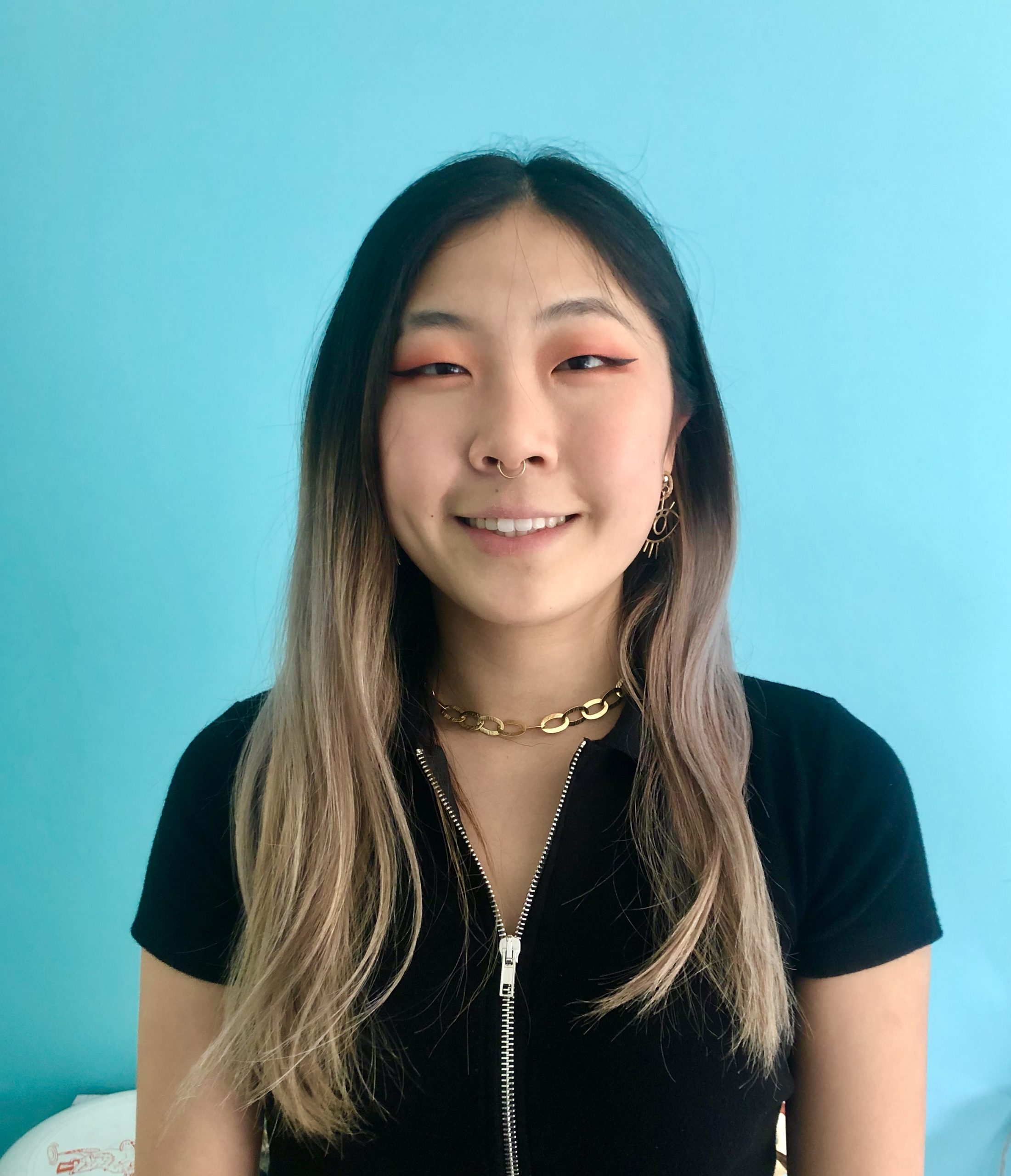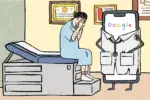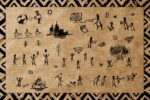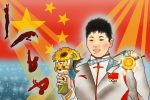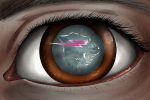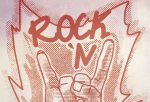My mom was pissed when I got my wisdom teeth removed. She complained that removing any part of the body was going to mess up the balance of Qi in my body, a seemingly superstitious belief. But as a certified doctor of geriatrics at the Veteran’s Affairs Hospital who attended medical school in China, my mom is versed in both Western medicine and traditional Chinese medicine, also known as TCM. These two theories often contradict each other, as shown in the case of wisdom teeth removal.
Growing up, my mom would always treat my sicknesses with what I’ve now realized are uncommon medicines and treatments. She boiled vinegar and wafted it around our house when I had a fever, kneaded acupressure points in my hands when I had migraines, and boiled me pear soup when I had canker sores. I used to help her with cupping therapy on her shoulders when she had knots from being stressed. She taught me the practice of massage.
It was only when I got to college that I realized that these were not “normal” cures for common ailments. I discovered DayQuil for the first time during my first semester away from home when I didn’t have my Chinese BanLanGeng drink. Based on how I’m relatively healthy after years of using herbs and going to massage therapy with my mom, as well as the thousands of years of TCM being practiced in East Asian countries, there is definitely merit to traditional Chinese medicine, even if it’s not proven by modern-day science.
The Basic Tenets of TCM
The foundational theory of TCM is based on the idea that people have a vital life force called Qi that is kept balanced inside them by two opposing energies, yin and yang. Yin is cooling, feminine, negative energy and yang is heating, masculine, positive energy. Too much of either yin or yang can throw off the balance in your body and cause illness. The body is seen as one vessel where all the parts are connected by meridians or channels of energy.
In Chinese, having too much yang energy is called 上火, and having too much yin is called 着凉. When I was a kid, my mom used to tell me that I had 上火, which explained my hyperactivity, but also caused me to grow canker sores. Certain foods carry different energies, which affect the balance in our body.
Foods that have a lot of “heat” or yang energy are spicy or acidic foods, like lemons, lychee, lamb, coffee, kiwi, durian, chocolate and alcohol. Too much yang causes illness associated with heat, like fevers, inflammation and tension. As someone who tends to harbor more yang energy, after eating lots of spicy food or consuming alcohol, my skin often breaks out, and I spend the next few days eating lots of “cold” foods to fix the imbalance.
“Cold” foods that increase the yin in your body are often watery and bitter, including foods like cucumbers, bananas, Asian pears, chrysanthemum tea, bitter melon and grapefruit. My mom’s theory as a practitioner of both Eastern and Western medicine is that yin and yang energy in food has to do with pH levels, iron and possibly vitamin B2, but none of this has been scientifically proven.
Popular TCM Practices
Another way of rerouting and correcting energy imbalances in the body is through acupuncture and massage. These practices are based on stimulating certain points along the meridians in our bodies. Acupuncture is a relatively popular treatment in America and is administered by placing needles at stimulant acupuncture points, also known as acupoints, along meridian channels. Sometimes electric pulses are sent through the needles. Acupuncture is meant to trigger self-healing mechanisms, which is effective in treating chronic pain.
Especially amid the opioid epidemic, acupuncture represents a drug-free alternative cure to chronic pain. Acupuncture is also known for helping with those going through cancer treatment by minimizing the pain and nausea caused by chemotherapy. Different acupuncture treatments claim to cure different illnesses, but many studies in America have shown that fake acupuncture and sham acupuncture seem to have similar effects to real acupuncture treatments, so there are theories that the practice relies heavily on the placebo effect. Others will swear by it.
Similar to acupuncture, massage is based on stimulating specific acupoints, but practitioners use their fingers, hands and elbows instead of needles to apply pressure to the surface of your skin. Massage is more popularly used as a spa treatment to relieve muscle tensions.
Cupping is another TCM practice that sometimes you’ll see Olympic athletes use. During the 2016 Olympics, swimmer Micheal Phelps brought a lot of media attention to cupping therapy when pictures of the purple circles on his back and shoulders trended on the internet. Cupping is a type of deep-tissue massage treatment often used for relieving muscle tensions. A practitioner uses heat to create a vacuum under a cup and places it on the skin to bring the blood flow to the surface of the skin, which causes purple bruising to occur. Sometimes, acupuncture needles are added under the cup. Cupping is a fairly non-controversial TCM treatment; no studies show that it’s harmful, but many believe cupping may also depend heavily on the placebo effect.
Controversy
When it comes to the different practices of TCM and their use around the world, Chinese herbology is the most controversial. Chinese herbal products are used to solve all sorts of medical problems — from stroke, to heart disease, to mental disorders, to the common cold. They can be taken orally, used in ointments or burnt near the skin in a process called moxibustion.
Western medicine believes drugs and herbs should be prescribed symptomatically, for example, valerian for insomnia, or white willow bark for headaches. In contrast, Eastern medicine looks at the energetic nature of a sick body — whether it has too much yin or yang energy — tries to find the root cause of the problem and prescribes herbs to restore the balance of Qi.
One famous case used to discredit TCM herbology as a whole is Ma Huang, also known as ephedra, which TCM uses to treat asthma. Ephedra is a stimulant that targets the heart, lungs and nervous system, and was used in weight loss and dietary supplements in America in the early 2000s until it was discovered that high doses of it could cause serious, harmful side effects. The Food and Drug Administration banned the herb in 2003; it has since been taken off the retail market, but licensed TCM practitioners are still allowed to prescribe it in small quantities. Still, this adoption of TCM herbs into the mainstream can be very dangerous, especially if treated as just another over-the-counter supplement without any consultation from TCM experts.
The use of ephedra is just one controversy that grew from TCM practices. In 2019, the World Health Organization acknowledged TCM practices in their 11th version of the International Statistical Classification of Diseases and Related Health Problems and received a lot of backlash. Director-General Margaret Chan has openly applauded China’s improvements in public health and efforts to globalize the use of TCM practices. China has made it part of their political agenda to promote the use and legitimacy of TCM around the world.
Though much of traditional Chinese medicine is not grounded in science, it has been used in China, Japan, South Korea and other East Asian countries for thousands of years and there has been a systematic effort to standardize TCM terminology and techniques. Critics argue that there is no physiological evidence that qi or meridians exist, and scant evidence that TCM doesn’t just rely on the placebo effect. Many Chinese medicines have been shown to have hidden ingredients or contain FDA banned substances.
China endorses the use of TCM as not only a medical practice but as an economic industry. With over 450,000 practitioners and nearly 4000 hospitals in China that are exclusively dedicated to traditional Chinese medicine, legitimizing TCM is important to keep these institutions running. The Chinese pharmaceutical industry and rural Chinese agriculture depends on the demand of traditional herbs. China’s government has even banned people from speaking out against TCM, making it hard for Chinese doctors to question certain Chinese medical practices.
Western Versus Eastern Philosophies
While I do believe more scientific studies should be done to examine how traditional Chinese medicine works, it is important not to discredit the entirety of TCM. Often, we are told that Western science is the only way to go, but combining these two world views may be beneficial to modern medicine. For example, we could benefit a great deal by taking TCM’s approach of treating the body as a whole, instead of Western medicine’s approach of treating the symptoms of a disease as something separate from the body.
Often in Western medicine, we treat symptoms of an illness instead of the illness itself. For example, headaches are usually symptoms of a larger problem, but Western doctors will treat it as a single illness, prescribing painkillers instead of trying to understand its cause. In contrast, a TCM doctor might try to figure how imbalances in energy may have caused the headache and treat the root problem instead.
In a society where instant gratification fuels us to find quick solutions like popping a few pills or invasive surgeries to feel better, TCM’s merit comes from seeing the body as a single machine that works best when we nudge it in the right energetic direction after it loses its balance, rather than something to modify.
My mother may be right about my wisdom teeth; maybe they served some purpose in the larger system of my body that I didn’t know about. Pulling them out when they started to hurt was the easy way out, but it’s possible that removing this seemingly harmless part of my anatomy could have a larger impact on the balance of energy in my body.




